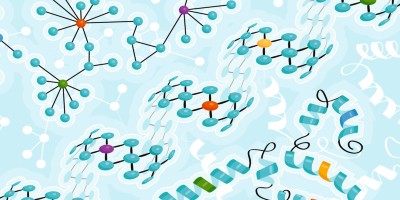Genetic technologies are revolutionizing human health. In parallel, geopolitical instability has prompted renewed discussions on the risks of DNA technology being weaponized in international conflict. With today’s changing security environment, we argue that risk assessments must be broadened from genetically targeted weapons to a series of new domains.
References
Lentzos, F. (ed.) Biological threats in the 21st century: The politics, people, science and historical roots (Imperial College Press, 2016).
Kania, E. B. Minds at War: China’s pursuit of military dominance through the cognitive sciences and biotechnology. PRISM 8, 82–101 (2019).
Lentzos, F. Personalized war: How the genomics revolution will reshape war, espionage, and tyranny… Aporia Magazine https://www.aporiamagazine.com/p/personalised-war (2023).
Cyranoski, D. China expands DNA data grab in troubled western region. Nature 545, 395–396 (2017).
Kanokwongnuwut, P., Martin, B., Taylor, D., Kirkbride, K. P. & Linacre, A. How many cells are required for successful DNA profiling? Forensic Sci. Int. Genet. 51, 102453 (2021).
Zmorzynski, S., Styk, W., Klinkosz, W., Iskra, J. & Filip, A. A. Personality traits and polymorphisms of genes coding neurotransmitter receptors or transporters: review of single gene and genome-wide association studies. Ann. Gen. Psychiatry 20, 7 (2021).
Dash, H. R. & Arora, M. CRISPR–CasB technology in forensic DNA analysis: challenges and solutions. Appl. Microbiol. Biotechnol. 106, 4367–4374 (2022).
Cyranoski, D. China’s crackdown on genetics breaches could deter data sharing. Nature 563, 301–302 (2018).
Sero, D. et al. Facial recognition from DNA using face-to-DNA classifiers. Nat. Commun. 10, 2557 (2019).
Andorno, R. in The Cambridge Handbook of New Human Rights: Recognition, Novelty, Rhetoric (eds von Arnauld, A. et al.) Ch. 26 (Cambridge University Press, 2020).
Acknowledgements
The authors are grateful for constructive criticism from P. Bacchus (Swedish Armed Forces) and K. Mossman (Michael G. DeGroote Institute for Infectious Disease Research, McMaster University, Canada).
Author information
Authors and Affiliations
Corresponding author
Ethics declarations
Competing interests
The authors declare no competing interests.
Peer review
Peer review information
Nature Reviews Genetics thanks Filippa Lentzos and Daniel S. Schabacker for their contribution to the peer review of this work.
Rights and permissions
About this article
Cite this article
Chattopadhyay, S., Ingesson, T., Rinaldi, A. et al. Weaponized genomics: potential threats to international and human security. Nat Rev Genet 25, 1–2 (2024). https://doi.org/10.1038/s41576-023-00677-8
Published:
Issue Date:
DOI: https://doi.org/10.1038/s41576-023-00677-8
- Springer Nature Limited


